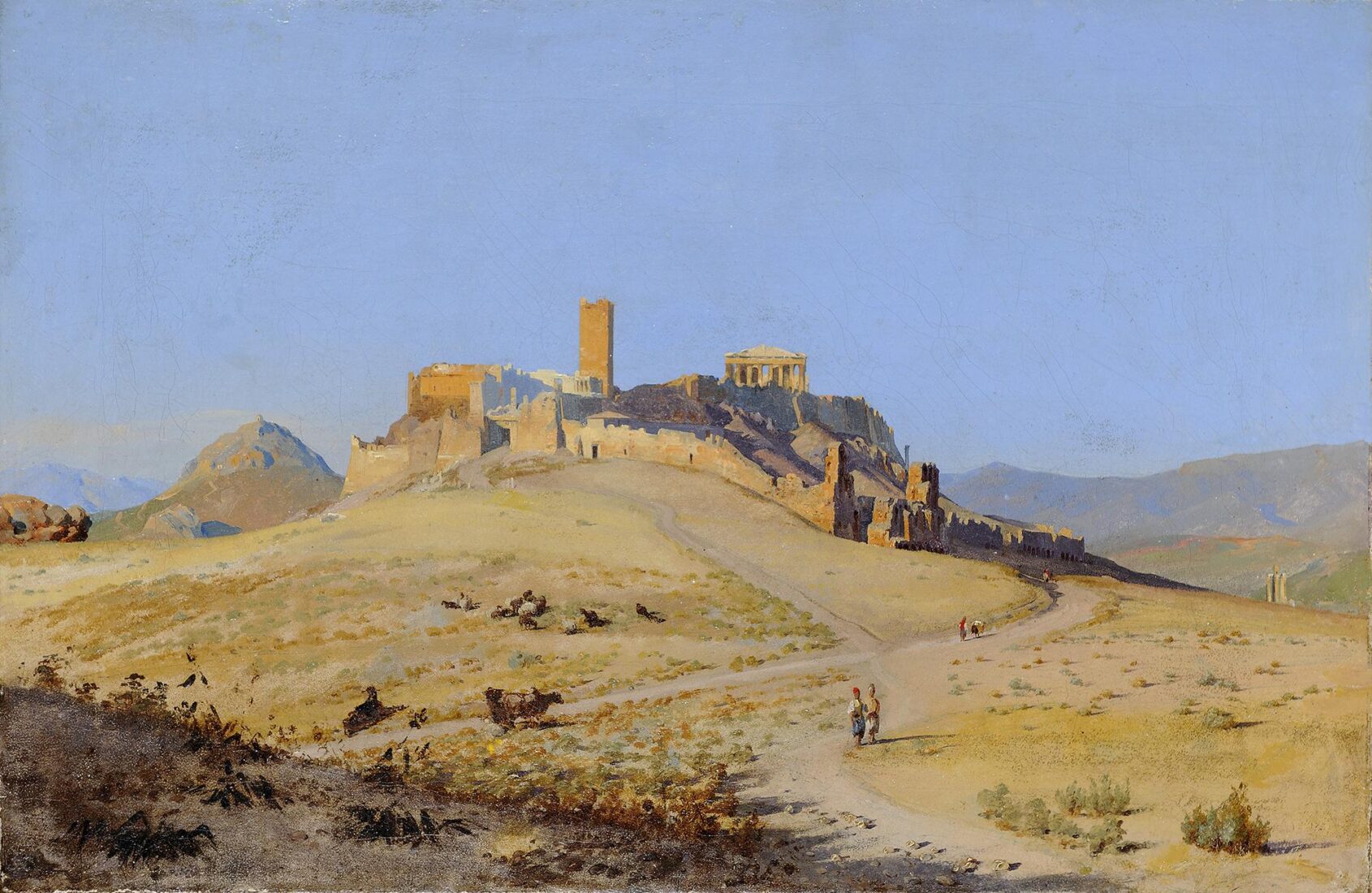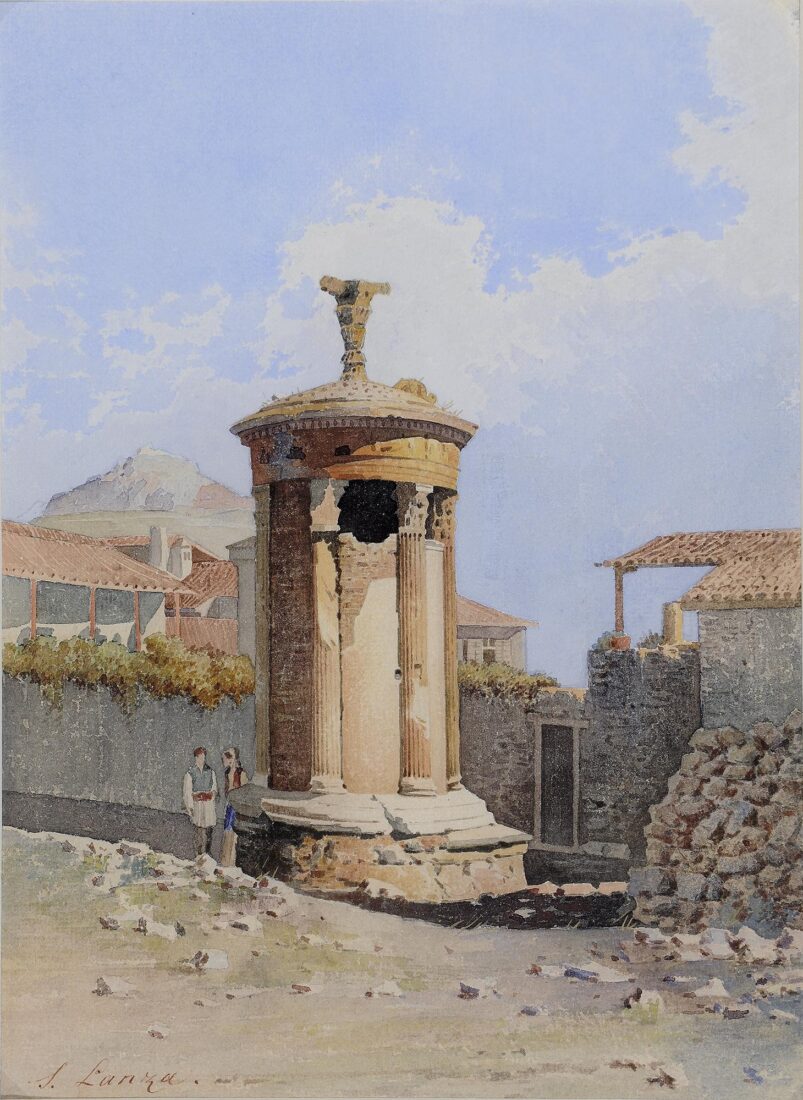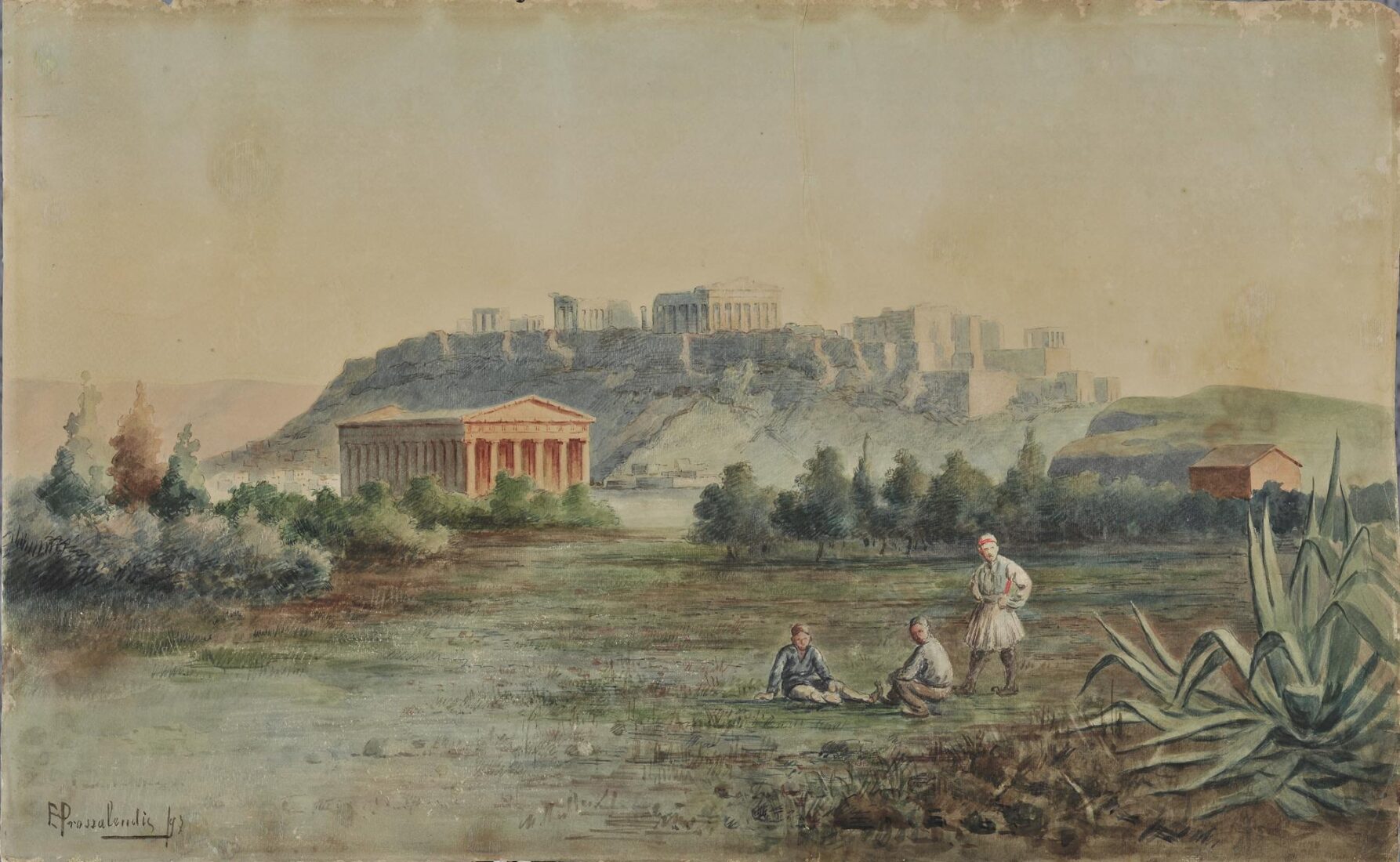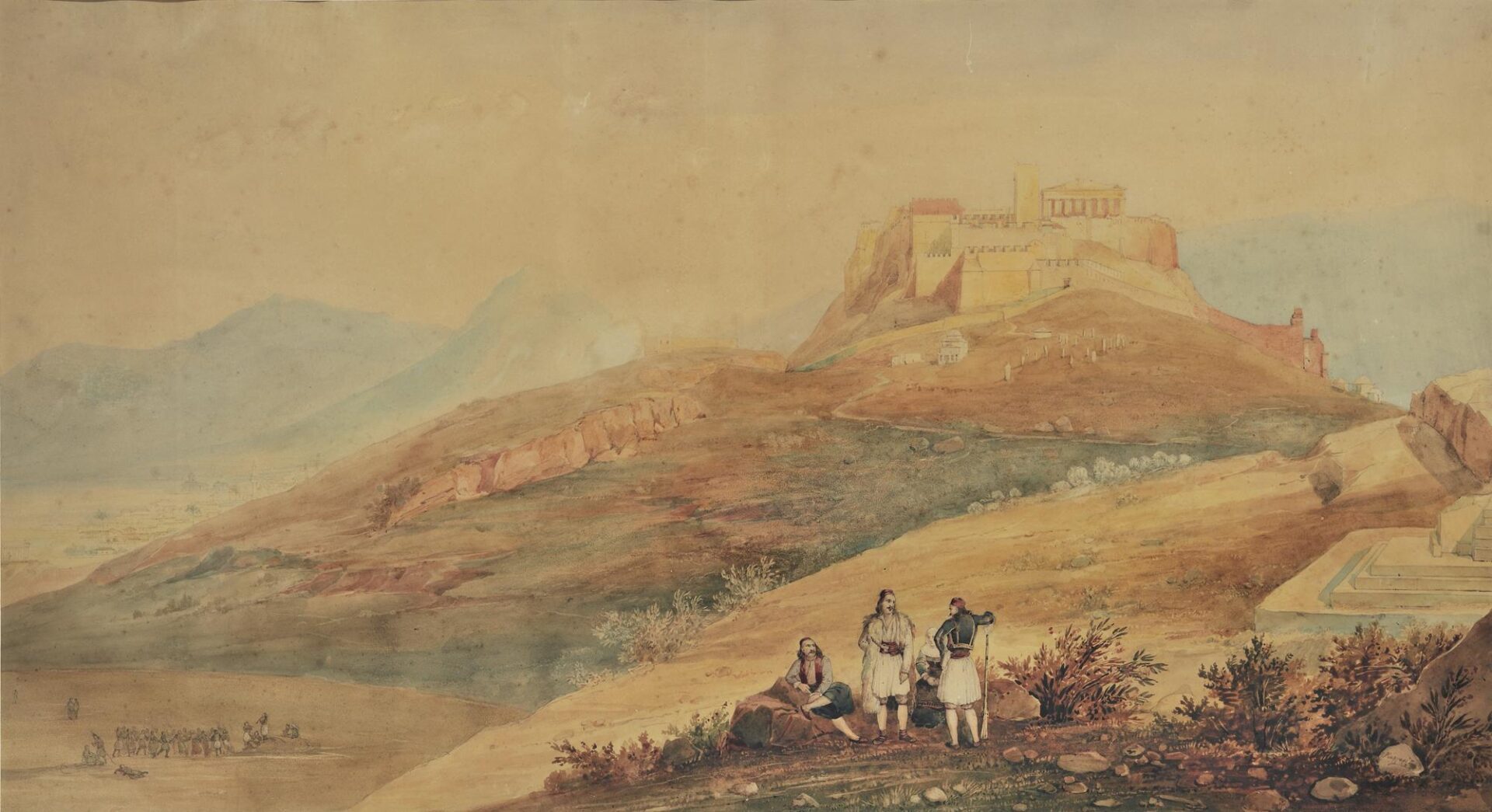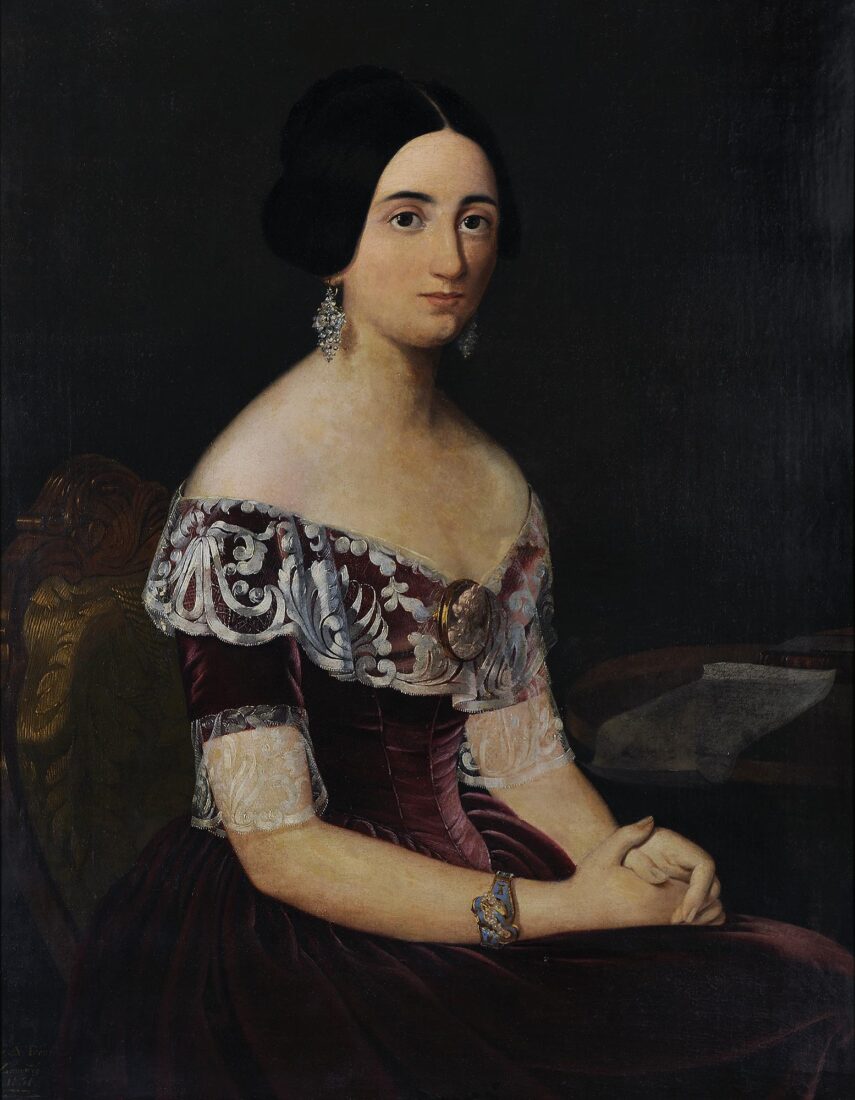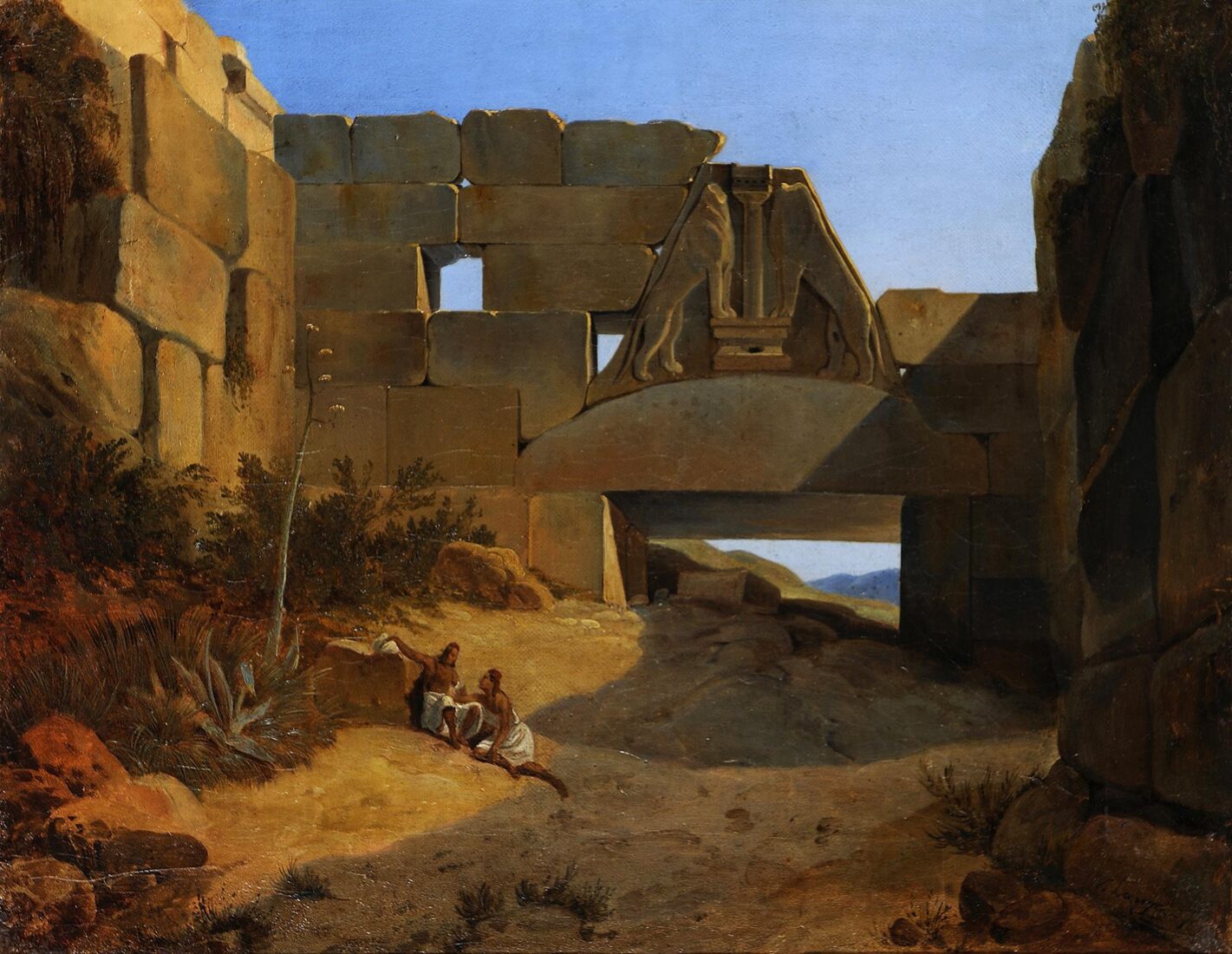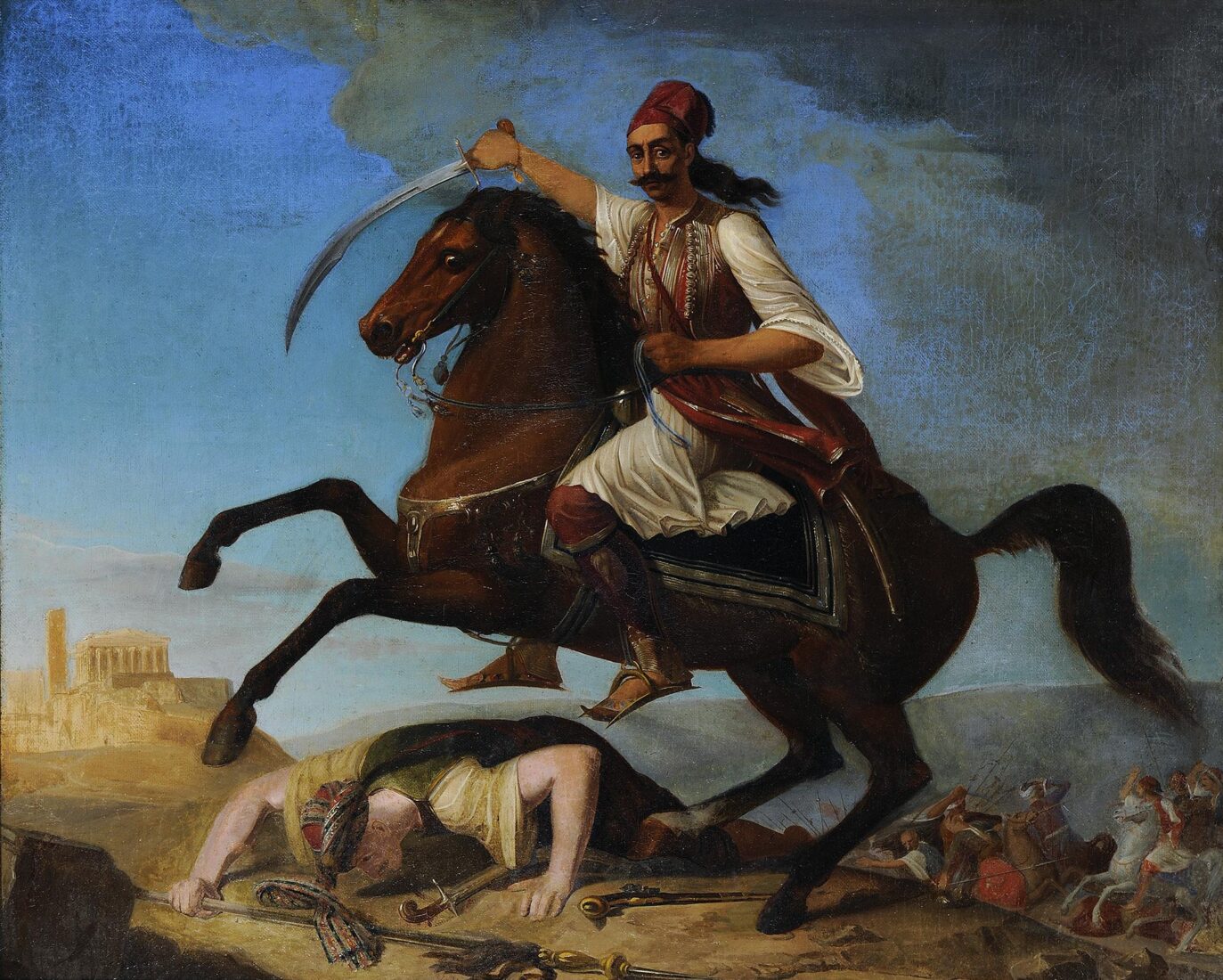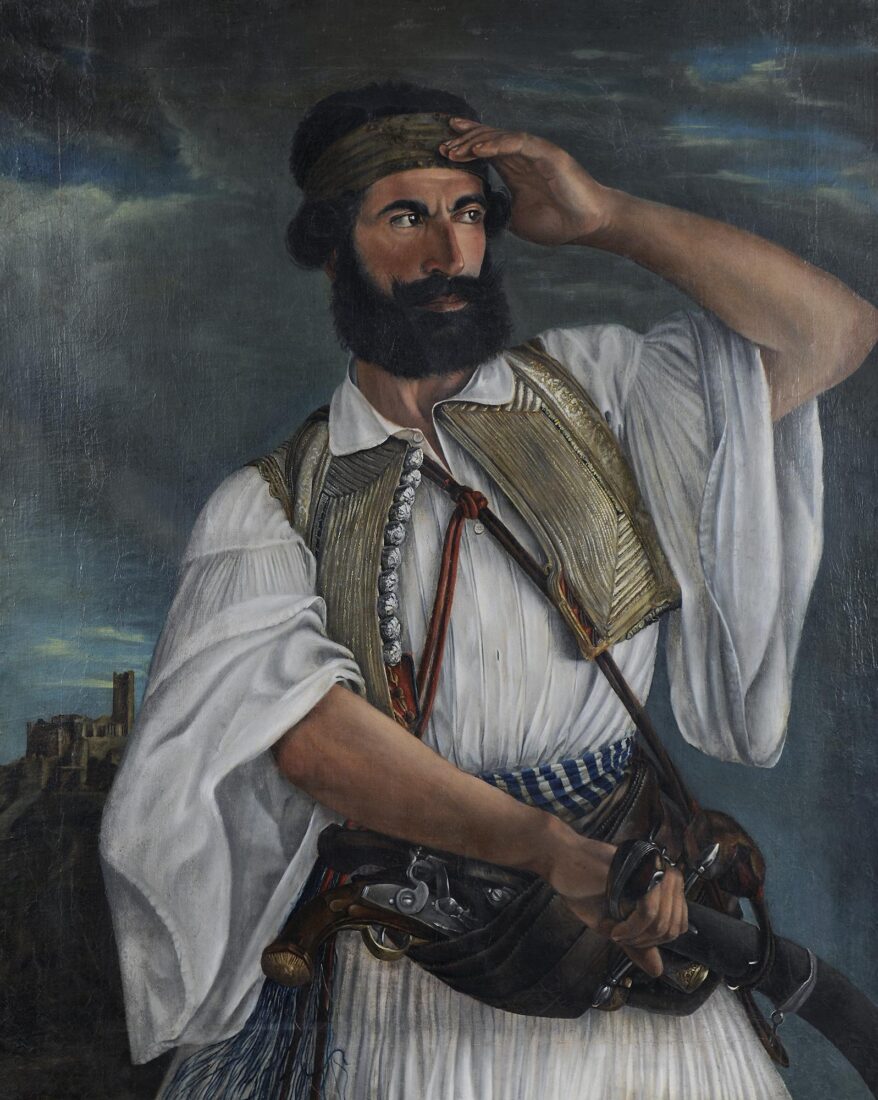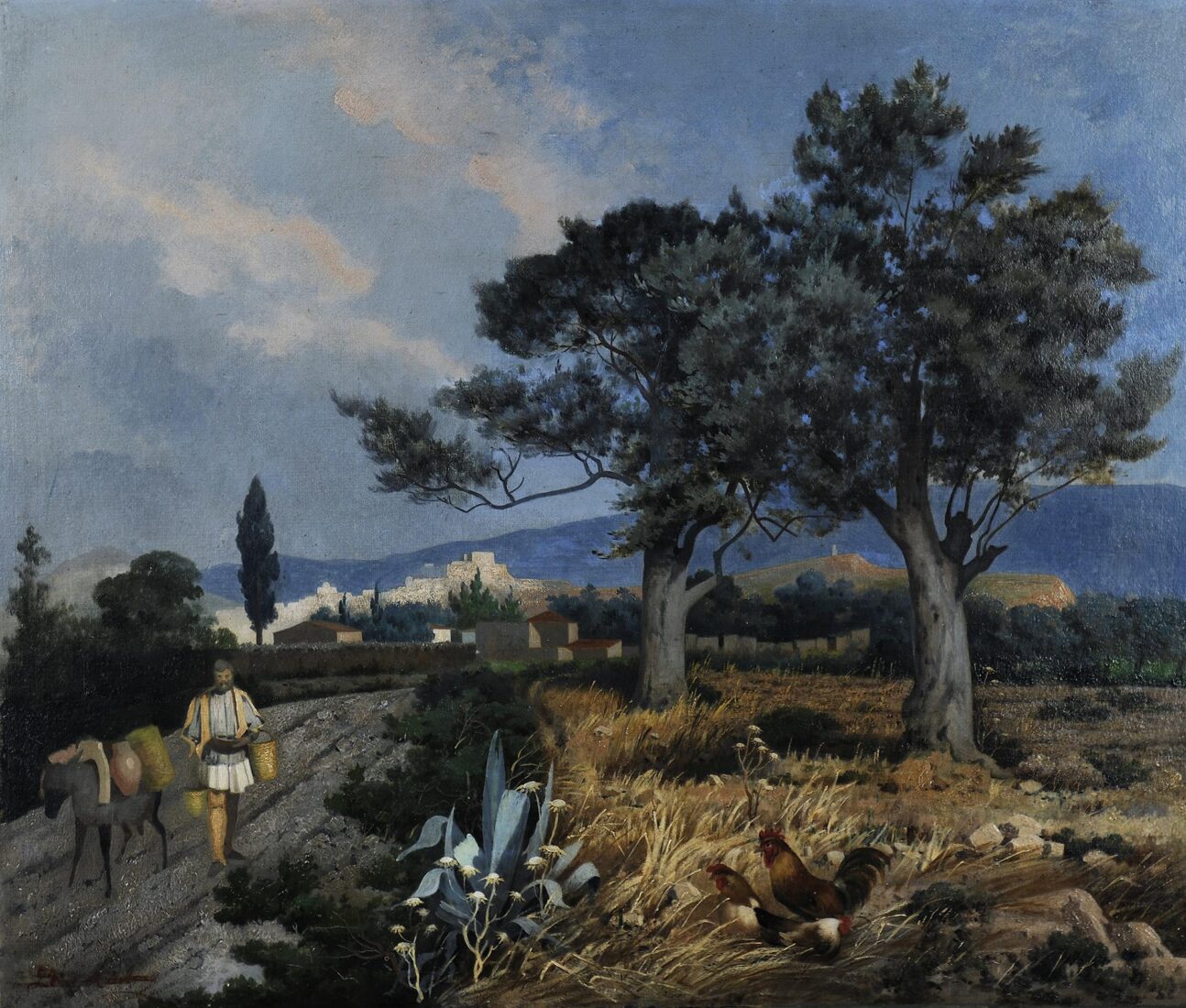

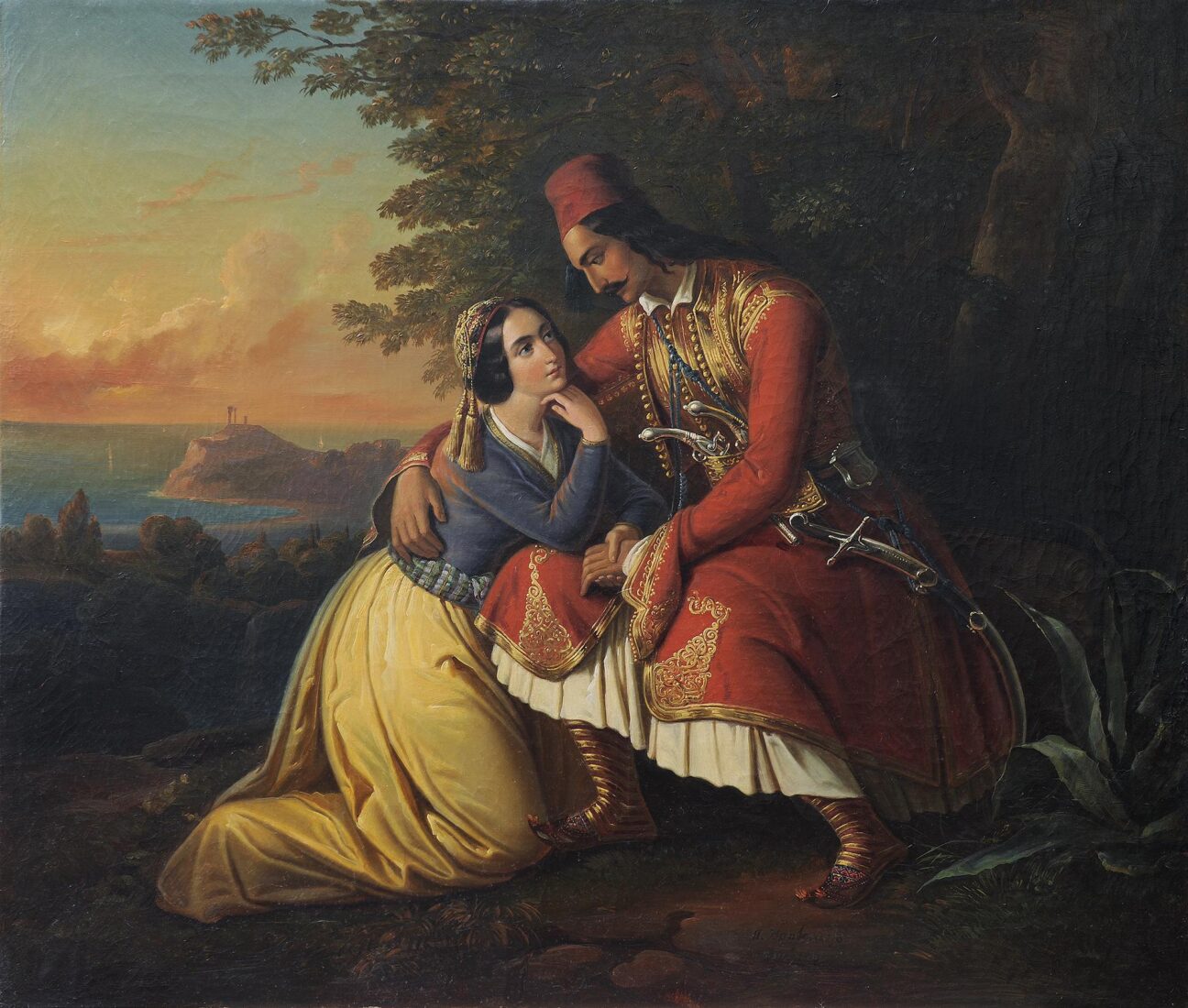
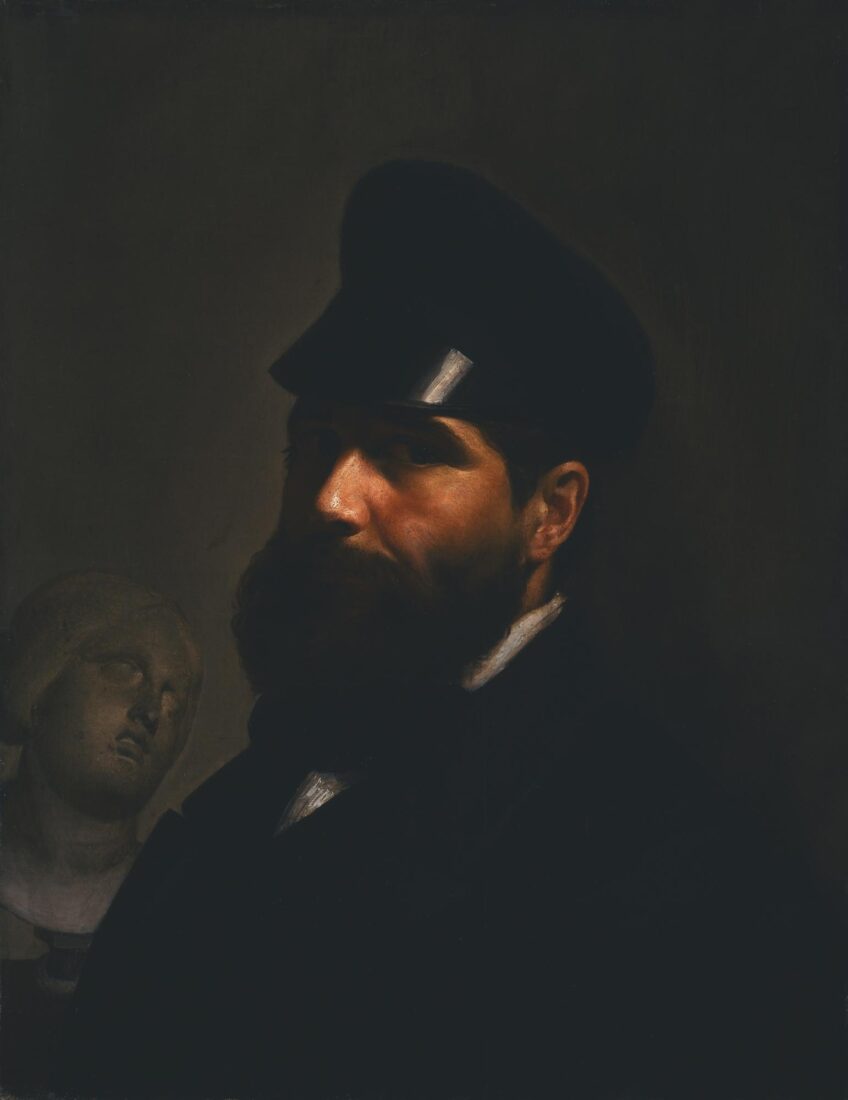
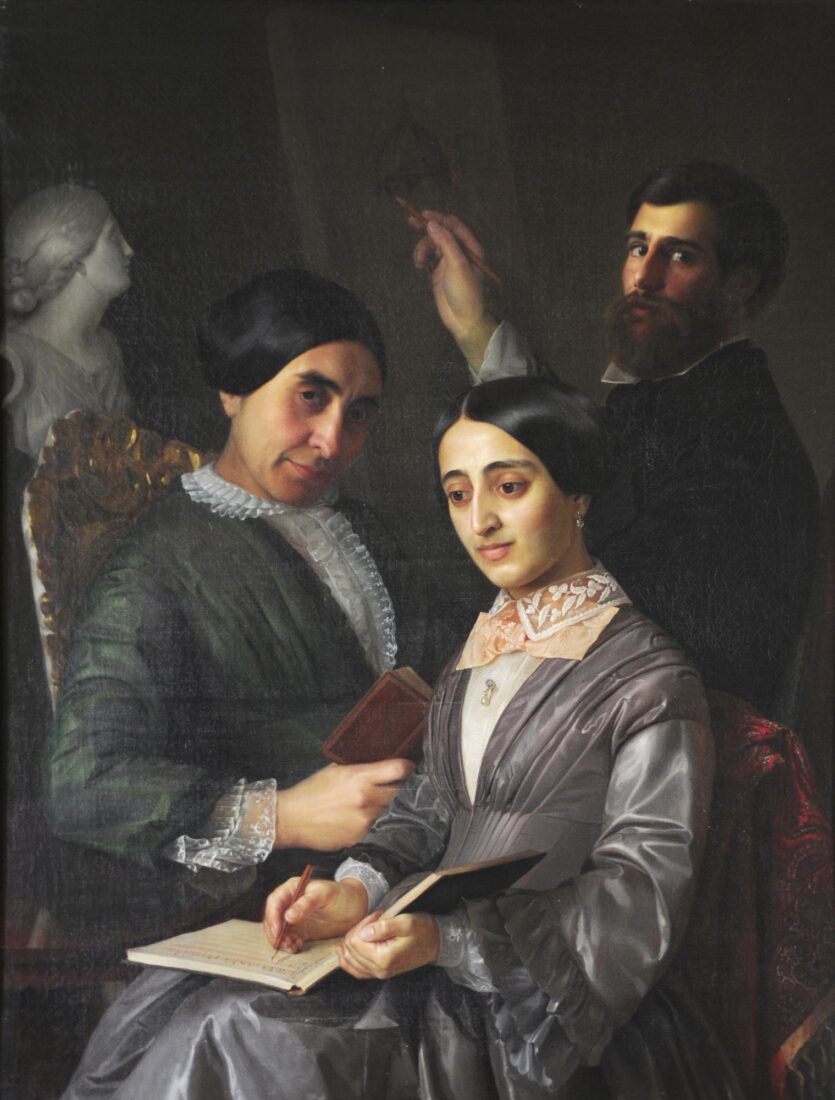
There is an allegory concealed in this family portrait. The painter lived in Florence, where the echo of a literary debate concerning the respective merit of the Liberal and the Fine Arts was still alive: Were the Fine Arts (painting, sculpture, architecture) equal to the noble Liberal Arts? The painter proposed his own answer in this painting, in which the Fine Arts exist side by side with the Liberal Arts. The artist himself becomes the symbol of the art of painting; the dome of the Florence Cathedral, shown depicted in the painting within the painting, suggests architecture, while invoking at the same time the city in which the artist lived. The bust of a classical Muse on the left suggests sculpture. These three fine arts coexist with poetry (symbolised by the small book held by the artist’s mother in law, Euphemia Kambani), while his wife, Zoe Kambani is writing down musical notes, suggesting music. Of excellent arrangement, the composition is inspired by Renaissance models. Gravely suffering from tuberculosis, Zoe Kambani was to perish soon afterwards.
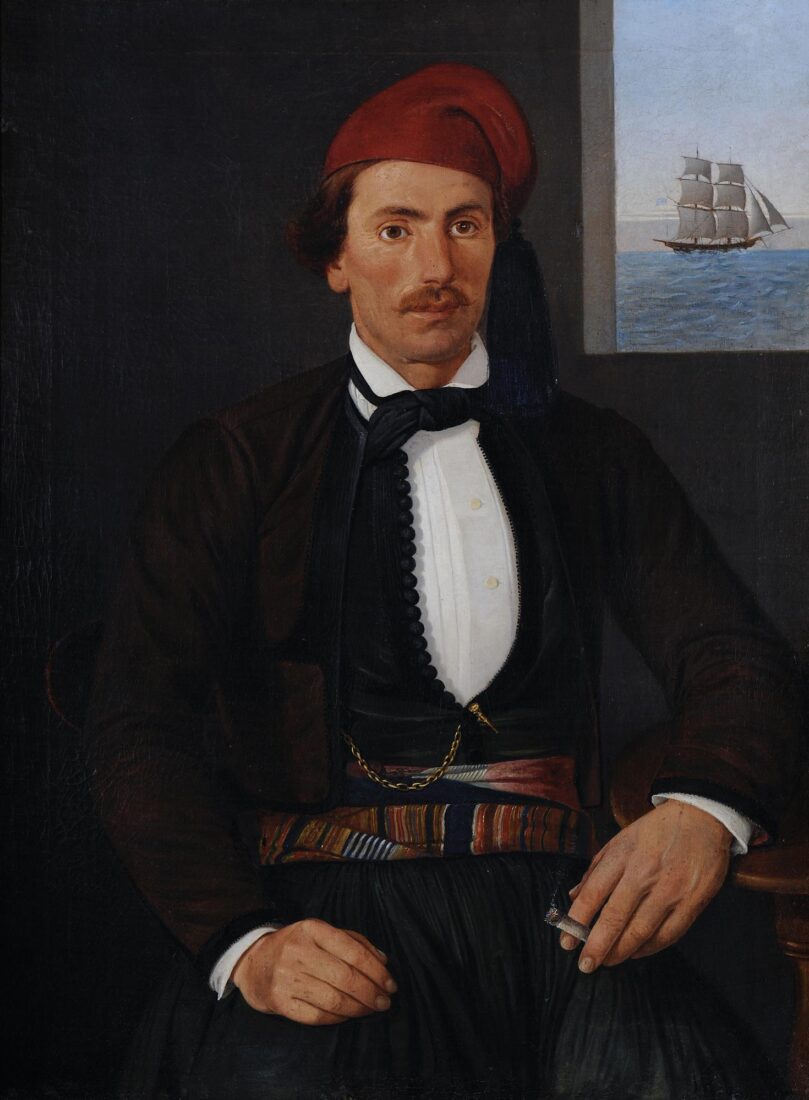
The descendant of a prominent maritime family of Hydra, Kriezis studied painting and engraving in Paris. Like Pige, he blends folk and academic elements in his painting. Unlike him, he uses the brown colour of academic painting and models volume through chiaroscuro.
The captain from Psara is portrayed in a proud frontal pose, looking at the viewer, a lit cigarette in his fingers. He is wearing the traditional costume of his island. Through the open window can be seen a vessel with all sails open. This detail is emblematic of the sitter’s professional occupation as a captain.
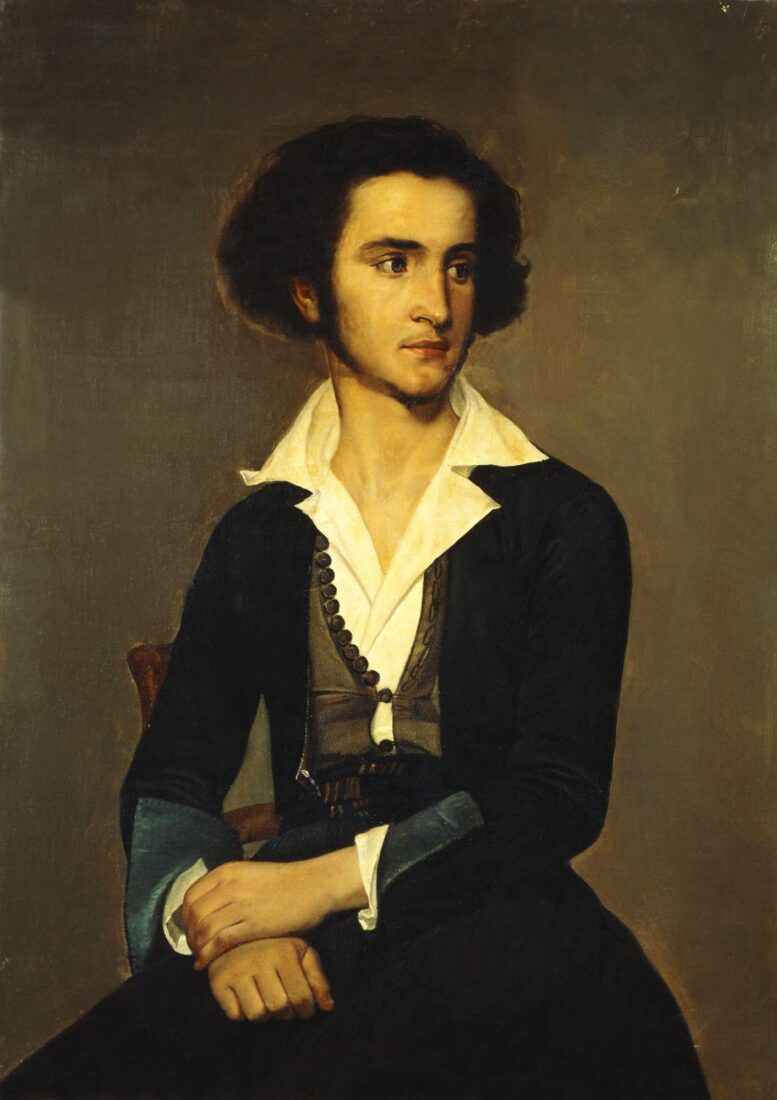
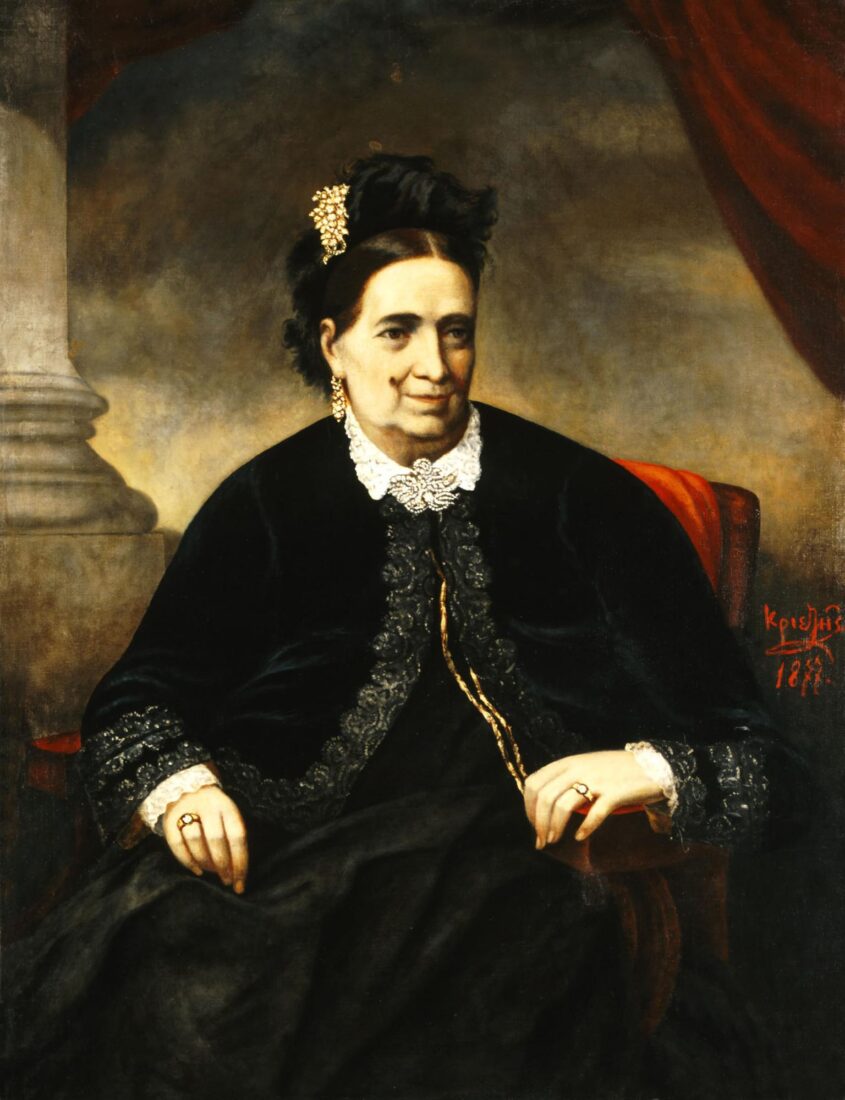
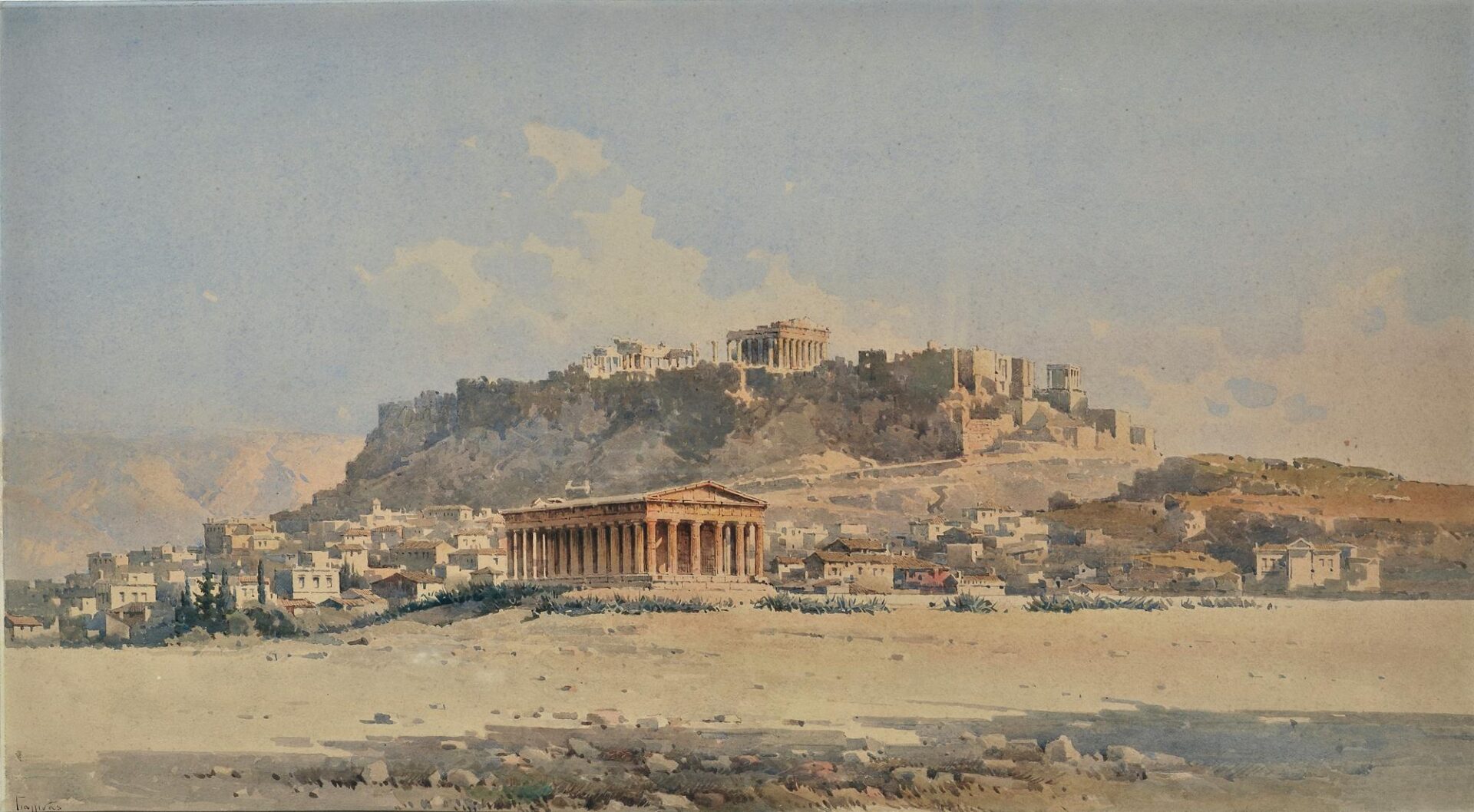
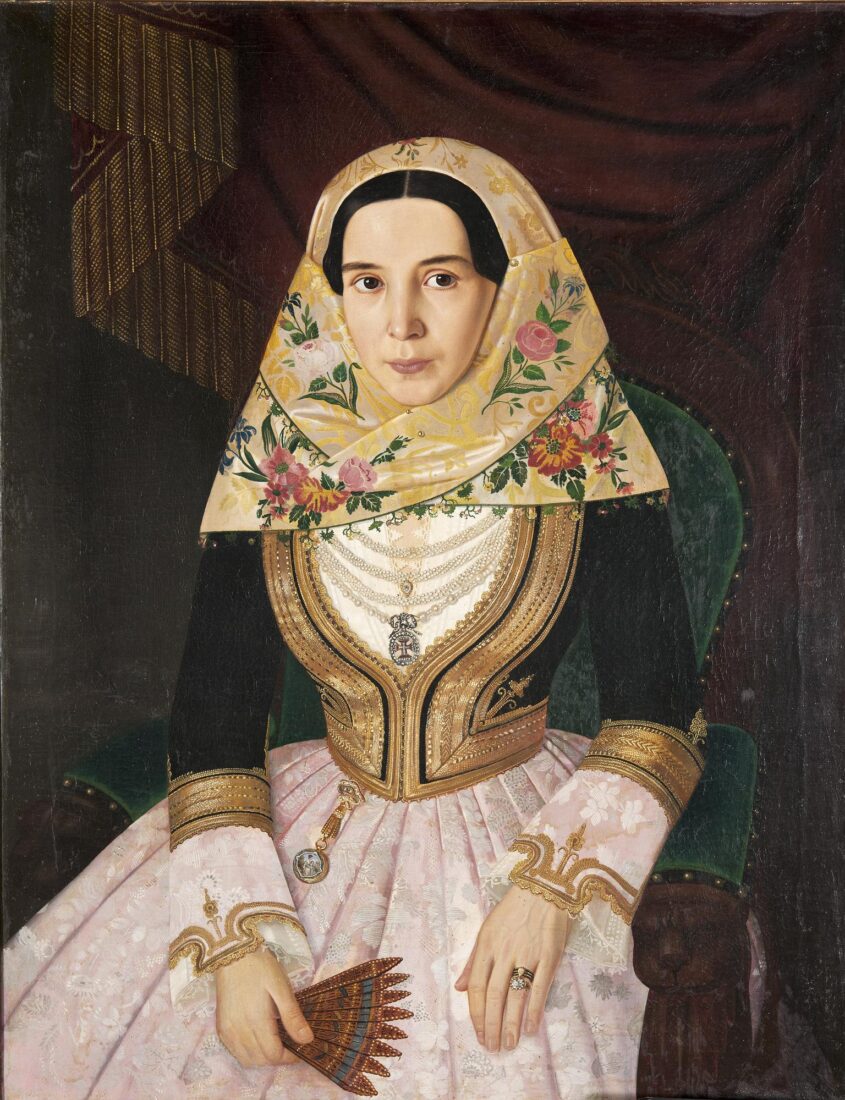
A Tyrolean painter working in Greece, Francesco Pige left us the most magnificent gallery of the Greek society in the early years of Independence. The frontal or three-quarter figures are portrayed looking towards the viewer, clad in traditional ethnic costumes and surrounded by elements either decorative or emblematic of their professions and social positions.
Kyriakoula Voulgari was the wife of Antonios Kriezis, who rose to political offices of the highest rank. She was member of Queen Amalia’s entourage. One of her jewels, carrying the royal emblems, reminds us of the fact.
Pige’s style is distinguished by his accurate depiction of faces and hands. An accuracy and clarity reminiscent of 15th century Flemish portraits, or those of the great French neoclassical painter Ingres. In capturing decorative details, though, such as embroidery, jewellery, in all their detail, Pige reminds us of naive, non-academic painters. He often forgets volume and perspective. Note how the flowers on Kyriakoula Voulgari’s scarf are rendered.
Another of Pige’s characteristic traits is that he does not use the brown colour, contrary to academic painters. To this he owes his clear and lucid colours.
